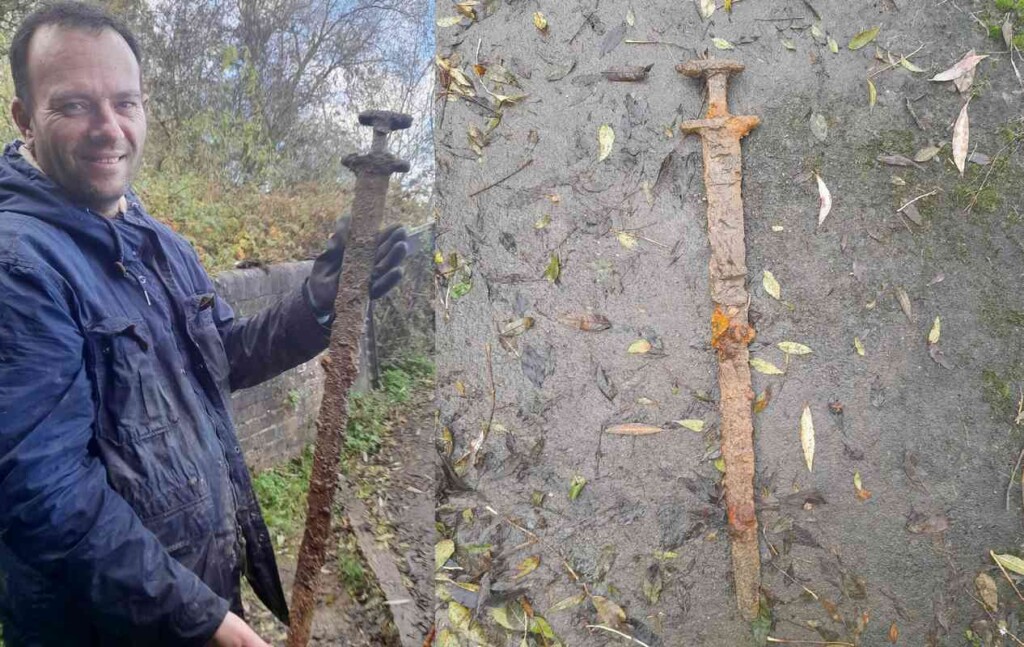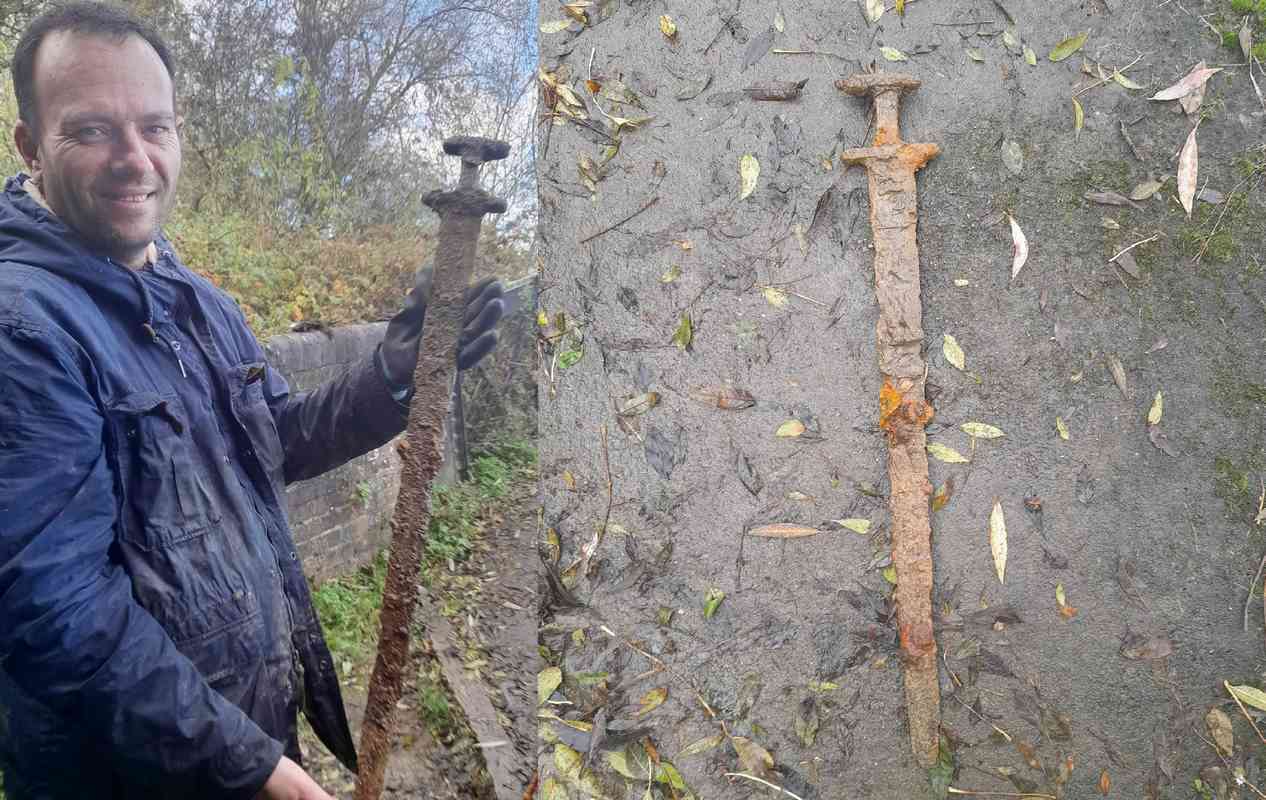
A “magnet fisherman” trawling his local river had spent several rainy hours pulling out scaffolding components. But deciding not to go home under these conditions, his magnet eventually snagged something rather more interesting.
Pulling it out of the water, Trevor Penny recalls shouting to his friend “what do you think it is?” His friend said something like “it looks like a sword!”
That must have been exciting; but it got an awful lot more exciting as the days went by. Realizing it was very old and indeed a sword, he called the Oxfordshire County Council, who took it into their possession to examine the relic and determine its origins.
“Only out for a couple of hrs today & had my best ever find!” Penny wrote in a Facebook community group of magnet fishermen. “Possibly medieval sword. Whatever era it is, it’s definitely over 250 years old.”
Magnet fishing is exactly what you think it is: simply the aquatic extension of the British love of metal detecting. A strong magnet attached to a rope is lowered into streams and rivers in order to attract metallic objects. Smithsonian Institute says that this can sometimes be dangerous, and reports of live grenades and unexploded ordnance being hooked are not unheard of.
MORE VIKING SWORDS: 2 Viking Swords Buried Upright May Have Been a Guide to Odin and Valhalla – Discovered By Road Crew
When the Council liaison officer came back to Penny with news, he must have been shocked, because the sword dated back to the 8th to 9th centuries, and almost certainly belonged to a Danish warrior.
Vikings occupy are large chunk of English history during this time period when the island was invaded by the “Great Heathen Army” as it was called. Conquering the kingdoms of Northumbria, Mercia, and East Anglia, they formed a proto-political state known as the Danelaw which wouldn’t cease to influence North Sea geopolitics until William of Normandy took over the country in 1066 CE.
“It’s the oldest thing found in this county magnet fishing,” Penny told a local paper called the Oxford Mail. “The officer said it was archaeologically rare to find whole swords and [sic] treasure of historical importance still intact. It was a proud moment to find it.”
“There was a little dispute with the landowner and the rivers trust who don’t permit magnet fishing,” Penny admitted. “The latter sent a legal document saying they wouldn’t take action on the condition the sword was passed to a museum, which I had done.”
MORE DISCOVERIES FROM THIS PERIOD: 4 Years After Discovery, the First Viking Ship Burial Found in Over 100 Years Reveals its Lost Secrets
Whether the experts who examined the sword called it Viking or whether they simply dated it to the period of thickest Viking occupation, Penny didn’t say. Vikings treasured their swords, but the Anglo-Saxons did too.
Vikings had a reputation as very poor swordsmiths. Slag content in the iron of Viking swords is consistently found to be higher than swords made in continental Europe, which means they would have often broken in combat.
Stories of swords breaking during battle are recorded in the Icelandic and Scandinavian sagas, and the famous account of the Muslim emissary Ibn Fadlan meeting Vikings on the Volga River states that they all carried Frankish swords.
SHARE This Once-In-A-Lifetime Discovery With Your Friends…




















